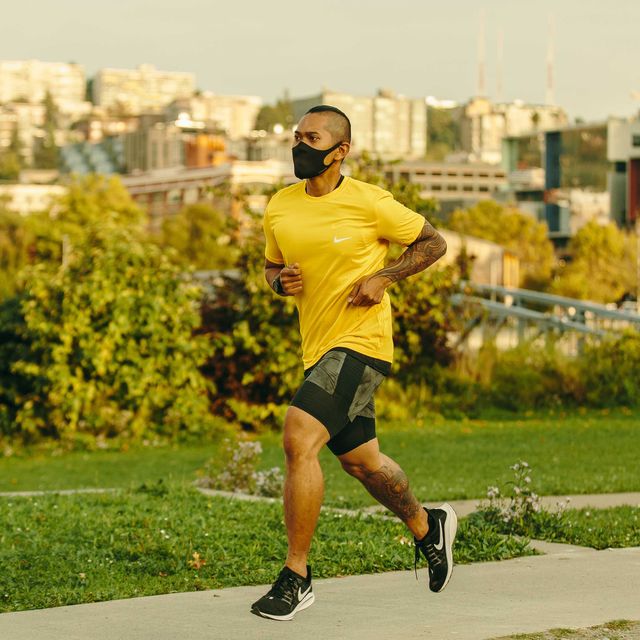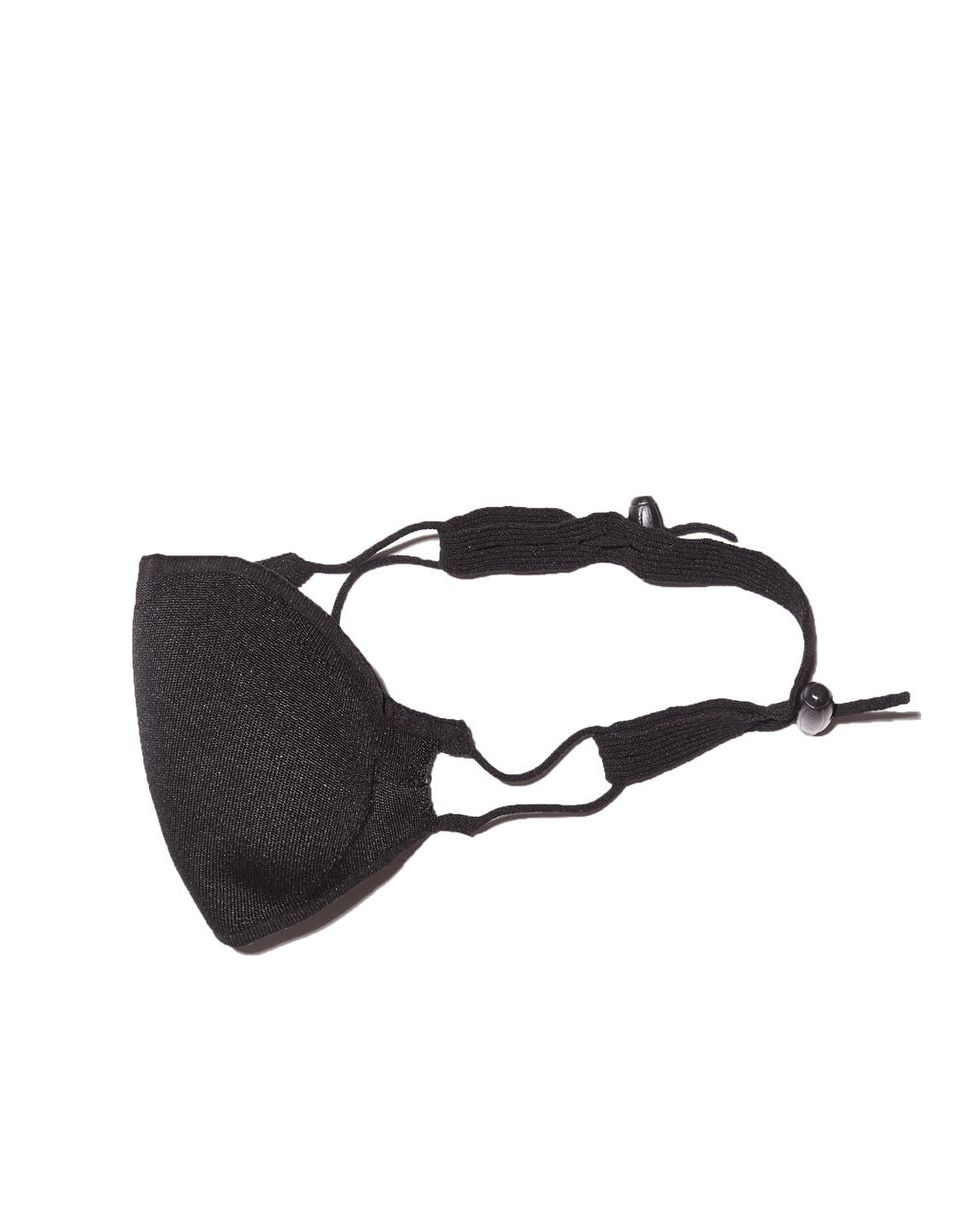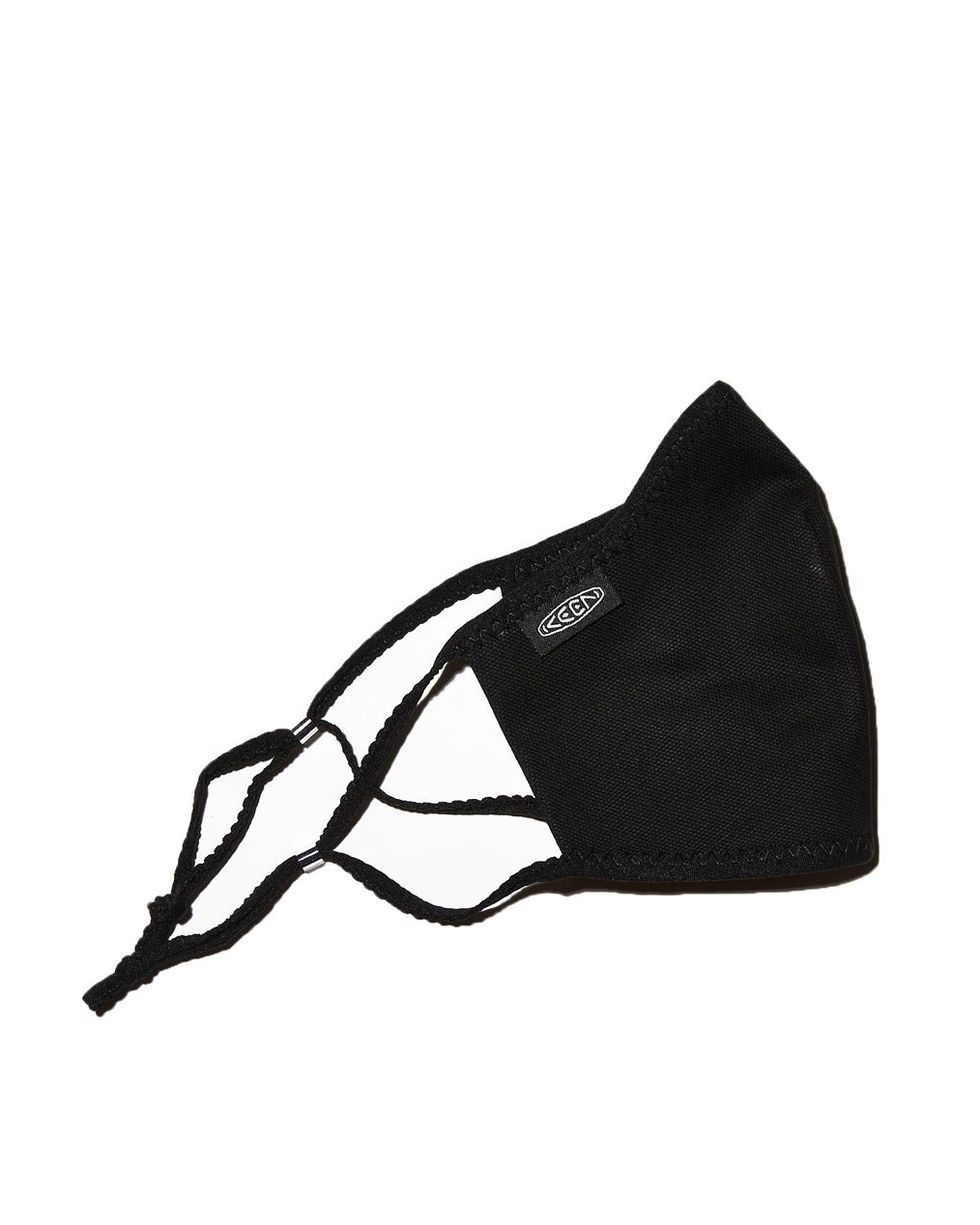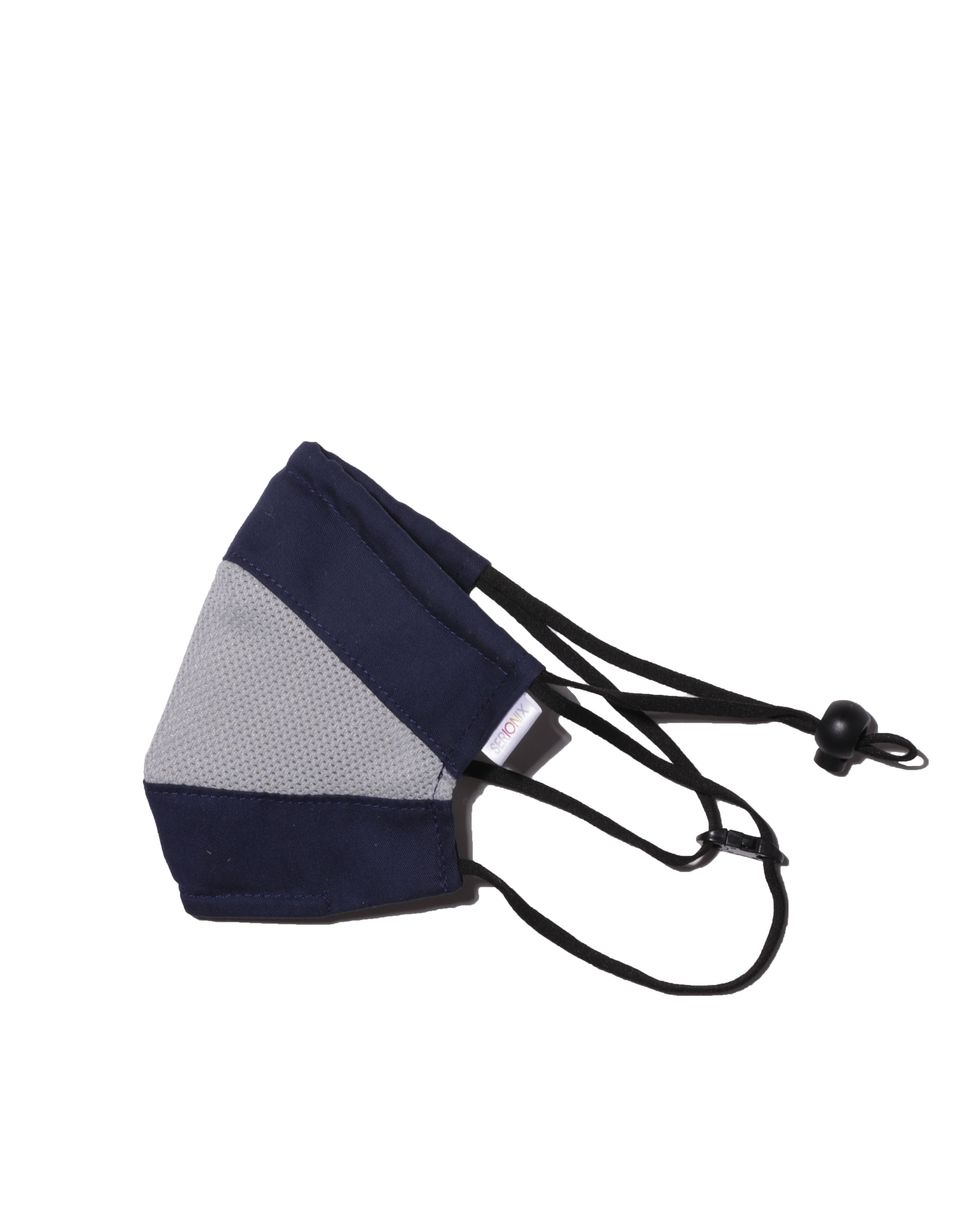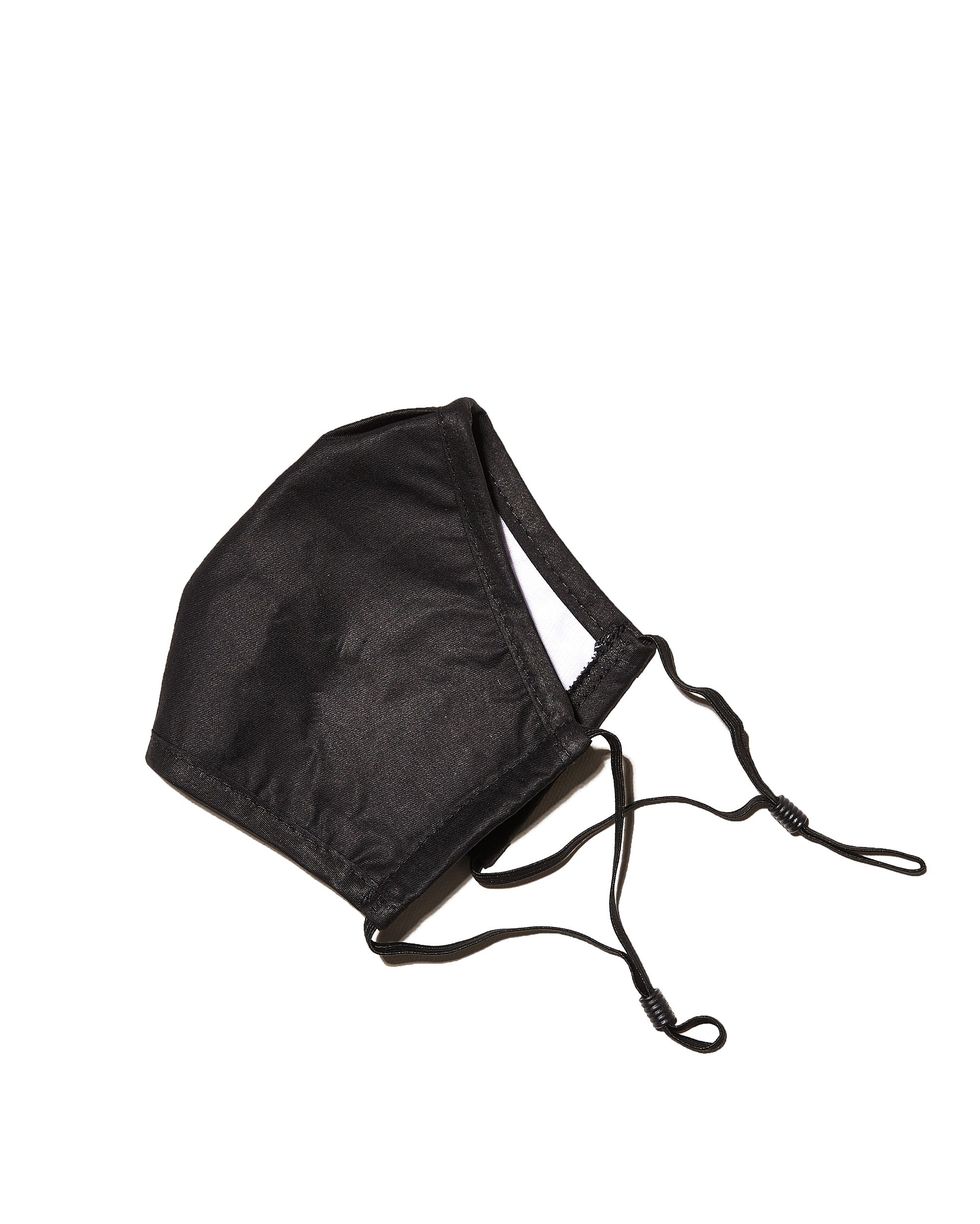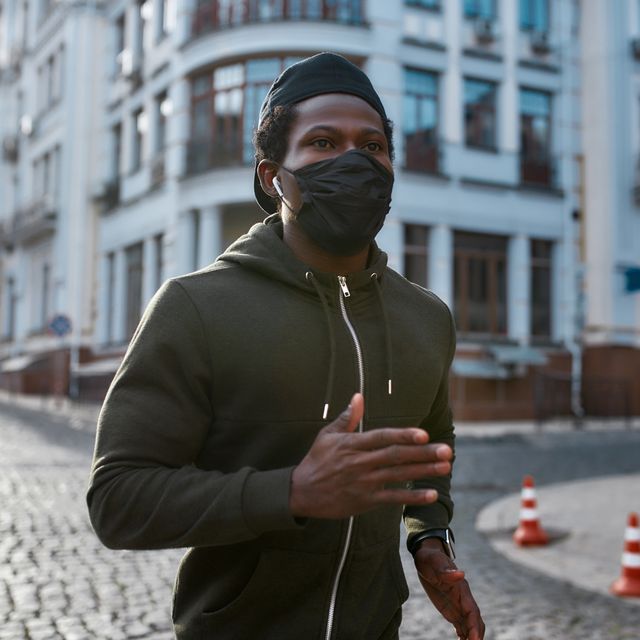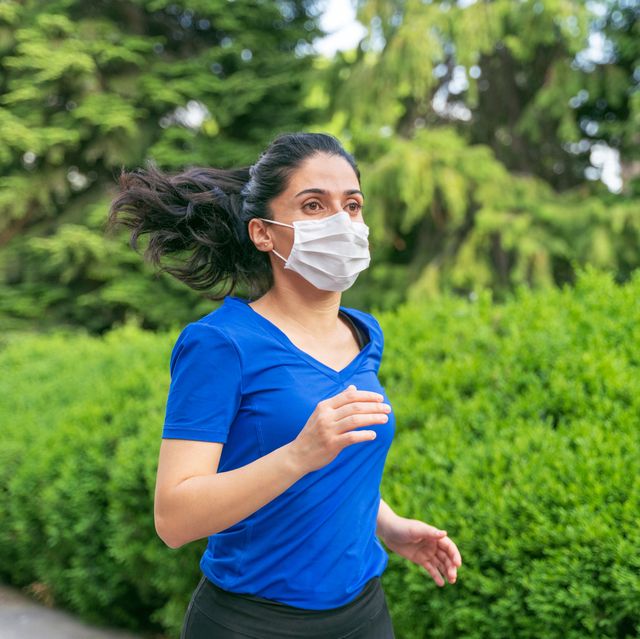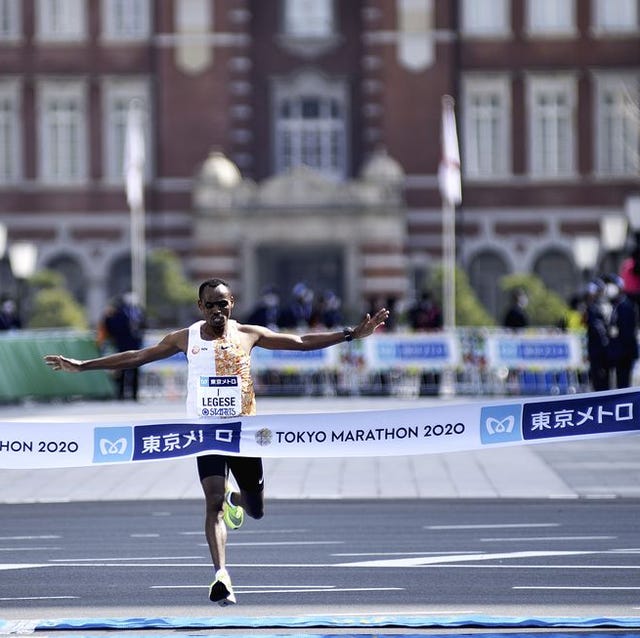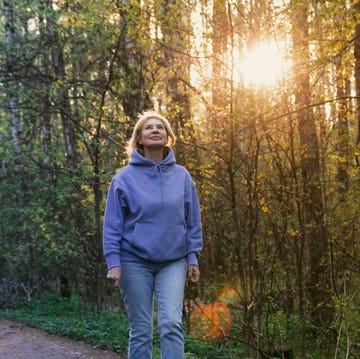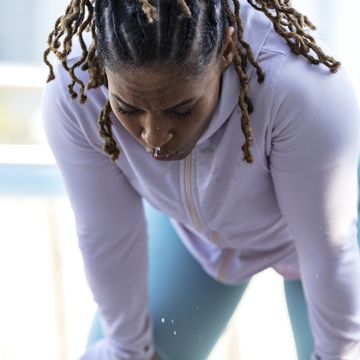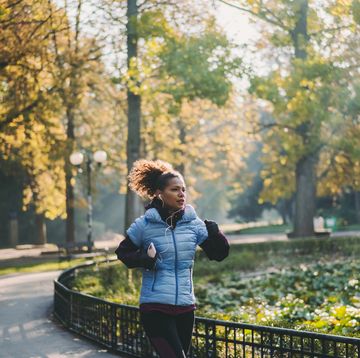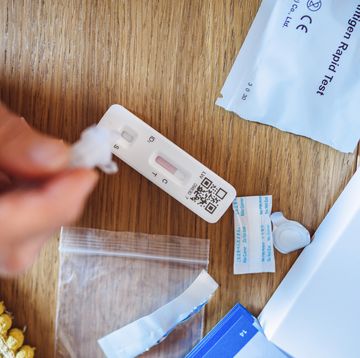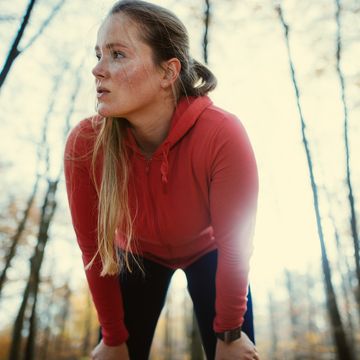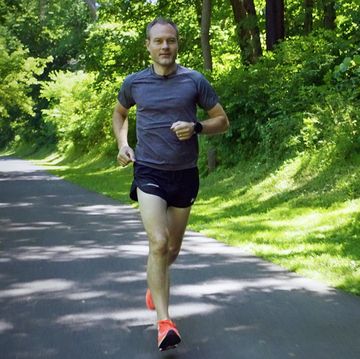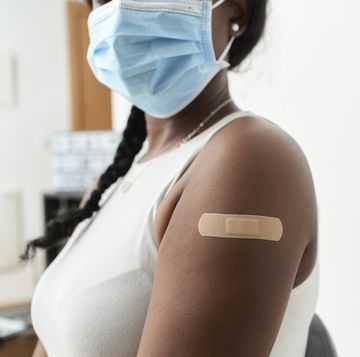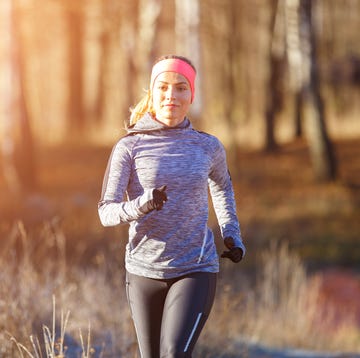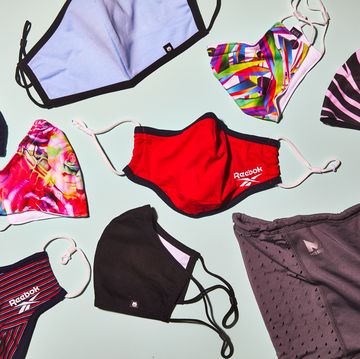This is a rapidly developing situation. For the most up-to-date information, check resources like the Centers for Disease Control and Prevention (CDC) and local health guidelines regularly. This story will be updated as new information becomes available.
- Even as COVID-19 vaccination rates in the U.S. ramp up, CDC guidelines still recommend “cloth face coverings in public settings and when around people who don’t live in your household, especially when other social distancing measures are difficult to maintain.”
- The CDC recently updated their guidelines to specify that according to research, masks can also reduce your own exposure to infectious droplets through filtration, as well as reduce the spread to others.
- Runners should be running safely, either solo or in very small groups, and on routes where they won’t encounter others or can maintain at least six feet of distance or more from others at all times.
- A recent study done by researchers at Duke University found that of commonly used masks, three-layer surgical masks, or similar homemade cotton masks were effective at reducing the transmission of droplets during regular speech.
- Still, wearing a cloth face covering is not a substitute for regular hand washing, physical distancing, or remaining at home when ill. Check your local government recommendations for guidance. (You can find a directory of state health departments here.)
Although the coronavirus pandemic has impacted day-to-day life for all, we fortunately still have the option to run outside, either solo or with a small group depending on where you live and your personal risk factors. Your runs should be in areas where you can be alone or maintain at least six feet between yourself and others to reduce the risk of spreading the virus. (If you’re not feeling well, it’s best to stay home.)
→ For the latest health and running news, join Runner’s World+!
What is the latest info on masks?
As we learn more about the spread of coronavirus, it remains clear that asymptomatic spread is still a concern, according to the WHO. This means you may be able to spread the virus to others without knowing you have it, and others may be able to spread it to you.
Which is why CDC guidelines recommend “cloth face coverings in public settings and when around people who don’t live in your household, especially when other social distancing measures are difficult to maintain.”
Additionally, the CDC has updated their guidelines to specify that according to research, masks “can also reduce wearers’ exposure to infectious droplets through filtration.”
As states begin to open up, and people return to activities like indoor dining and larger social gatherings, states, such as Wisconsin, North Dakota, and South Dakota among others are reporting record-high cases and hospitalizations in recent days.
To help mitigate the spread, some state governments have suggested that everyone wear cloth face coverings when they go out in public for essential activities to help prevent those who are asymptomatic from spreading the virus. In fact 34 states, including Pennsylvania, Minnesota and California, have instituted mandatory mask wearing in public anytime a person is unable to consistently maintain a distance of at least six feet from people who are not members of their households. Other states, such as Massachusetts, have updated their mask mandates to state that any time a person is outside of their home they need to wear a mask. And, many businesses, such as grocery stores, require customers to wear masks in order to enter. (WHO has more resources on how to properly use masks.)
Recently, a study published in Proceedings of the Royal Society A suggested that widespread mask use may help reduce transmission rates and when combined with social distancing and any necessary stay-at-home orders could even help prevent a second wave, which is why it’s important for everyone to wear a cloth face covering over their nose and mouth in public.
And, while it takes some getting used to, donning a mask likely won’t hinder your running performance. A recent study published in the International Journal of Environmental Research and Public Health found that wearing a mask does not hinder performance or oxygen levels.
Another recent study done by researchers at Duke University found that of commonly used masks, three-layer surgical masks or similar homemade cotton masks were effective at reducing the transmission of droplets during regular speech.
There has been some controversy over this study due to misinterpretations. It’s important to remember that this study was not designed to test the efficacy of each mask, explains Matt Ferrari Ph.D., associate professor of biology in the Eberly College of Science, and a researcher with the Center for Infectious Disease Dynamics at Penn State. “This is not a criticism of the authors, they didn’t design the study for this, it was designed to show how to evaluate masks and face coverings,” Ferrari said.
So the results are not to say you should stop using a face covering—even neck gaiters or a bandana. The key is to continue to “stick with the tried and true advice: Stay apart. Stay outside. Wear a multi-ply mask if you can. Wear anything in a pinch,” Ferrari said.
What do all these recommendations about masks mean for runners?
“Really, what these announcements should mean to athletes, and to everyone, is that the situation we are in is very serious. And that we all need to consider the consequences of our individual actions on the community around us,” said Ferrari.
The main purpose of the mask is not to protect you, but to protect other people from you, reducing the risk of symptomatic and asymptomatic spread. “If that is the goal, going out solo and avoiding other people altogether is the best thing you can do,” said Brian Labus, Ph.D., MPH, assistant professor in the School of Public Health at the University of Nevada Las Vegas.
But if you needed more incentive to wear a mask, both CDC guidelines and research suggest masks “can also reduce wearers’ exposure to infectious droplets through filtration.” The CDC website states that “multiple layers of cloth with higher thread counts have demonstrated superior performance compared to single layers of cloth with lower thread counts,” which means wearing multi-layer cloth masks (when coupled with physical distancing and hand washing) can help reduce your risk of infection.
If your regular route is crowded, try to find a different route or adjust the time you run in the future for the safety of everyone. And if you don’t want to wear a mask when you run, you’ll need to find a route where you encounter no or few people and keep at least a six-foot distance from those you do encounter. You should also bring a face covering or mask with you in case of an emergency such as encountering an accident or having to stop in a store for food or drink.
There are other considerations to keep in mind. For example, the Pennsylvania guidelines state that masks “should not be worn damp or when wet from spit or mucus.” In a press conference on April 3, Rachel Levine, M.D., Pennsylvania’s secretary of health, suggested that cloth face coverings may not be necessary when out for solo exercise if you’ll be in a place where you won’t encounter anyone else. There is no advantage to wearing a face covering if you aren’t going to be near people at all, explained Ferrari.
“And that’s what we should be striving for, keeping big distances,” Ferrari said. “Face coverings do two possible things: They contain spread from the ill and prevent inhalation in the healthy. The degree to which they achieve these things is debated, but one thing is not: They are only effective if used properly.” (WHO has more resources on how to properly use masks.)
But even if runners are trying to practice physical distancing and run solo, we know that’s not always possible—especially on popular routes and trails. If you’re looking to wear a covering on your runs in an area where you may encounter others, wearing a Buff gaiter or other moisture-wicking face covering may help cut down the spread of droplets especially if folded, said David Nieman, Dr.PH., health professor at Appalachian State University and director of the Human Performance Lab at the North Carolina Research Campus. Cloth face coverings can even be made from household items like a bandana, T-shirt, or pillow case. (Tutorials can be found here.)
In general, “this virus is highly contagious and transmissible, and it appears we cannot be too careful,” Nieman said.
Masks should fit snugly over the nose and mouth, not be touched once placed on the face, and washed or discarded immediately after each use. (More helpful information on homemade masks can be found here.)
It is critical to emphasize that maintaining a distance of at least six feet remains vital to slowing the spread of the virus. Also, wearing a cloth face covering is not a substitute for hand washing, physical distancing, or remaining at home when ill. Check your local government recommendations for guidance. (You can find a directory of state health departments here.)

